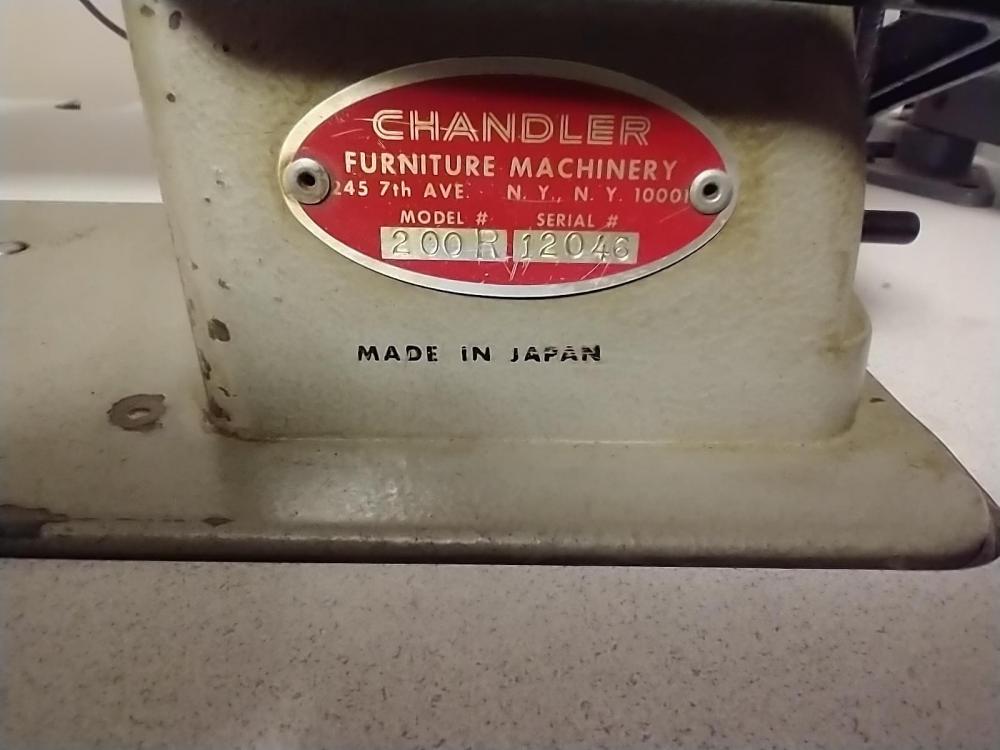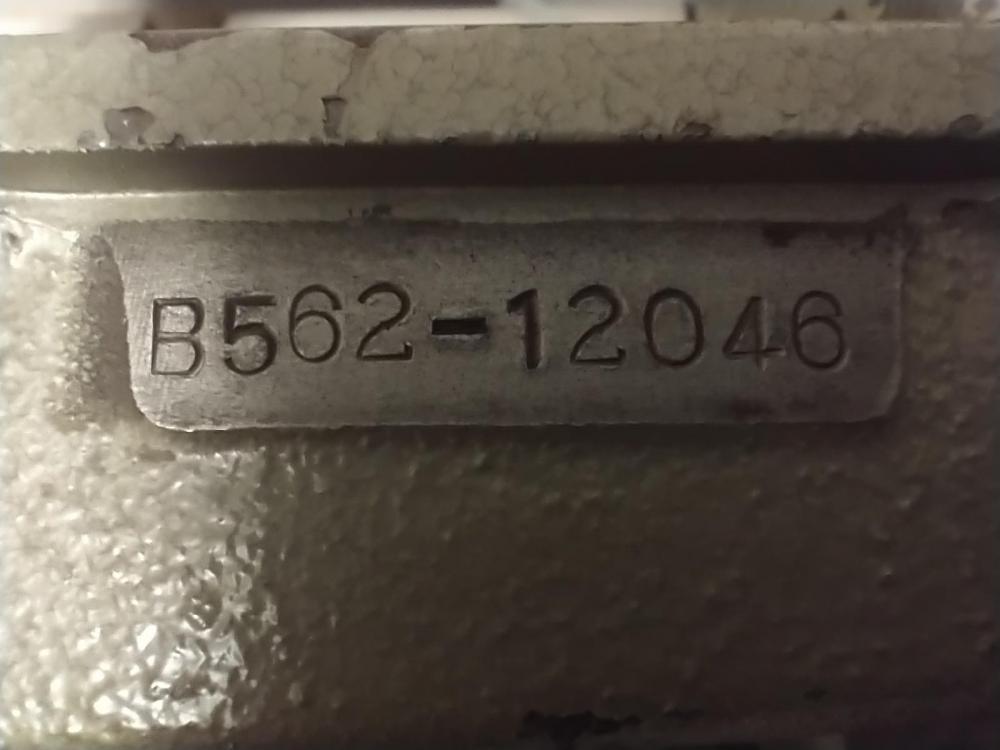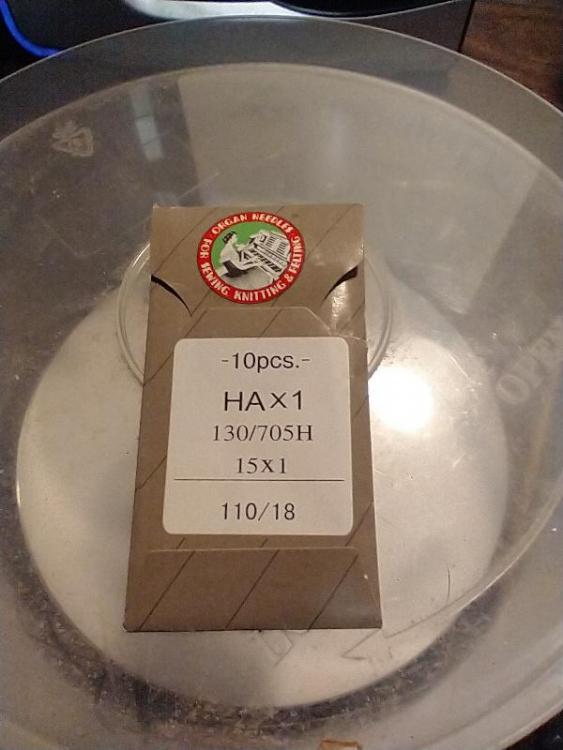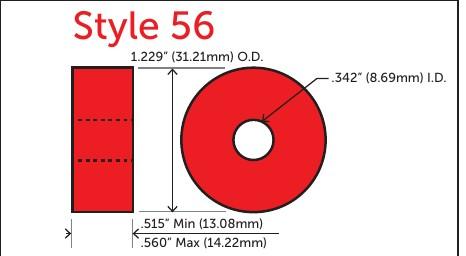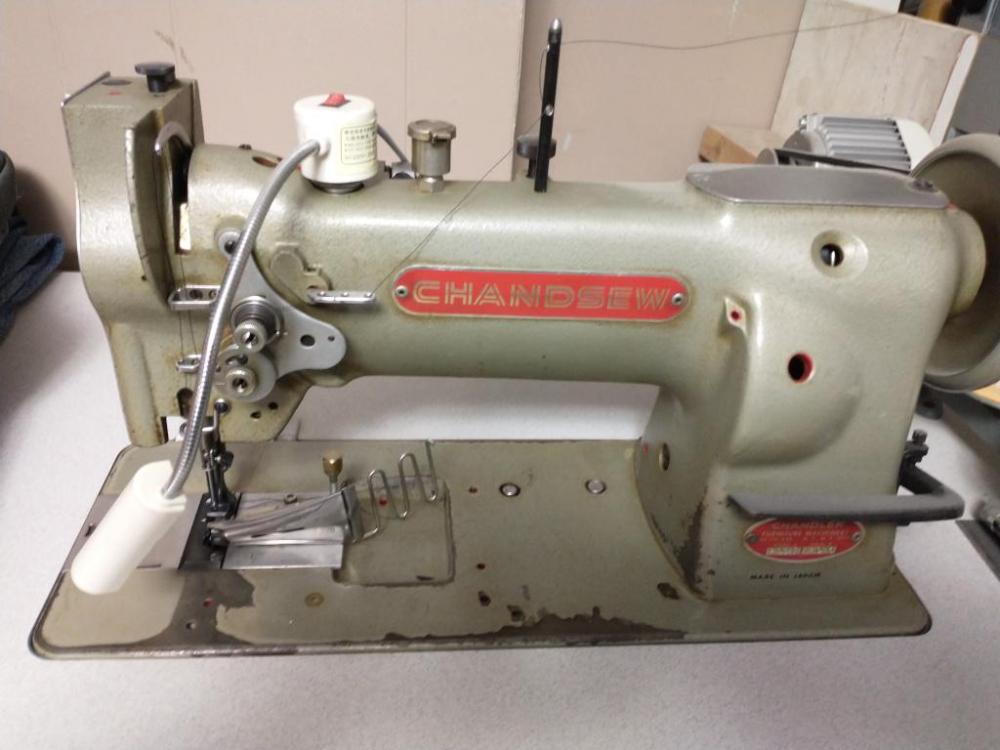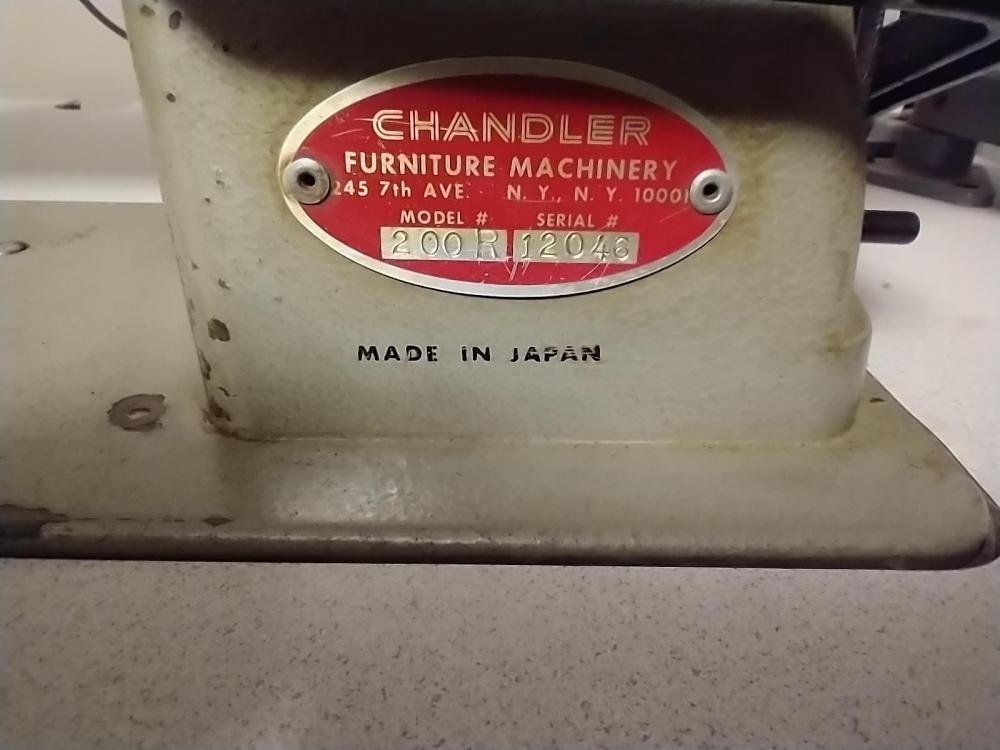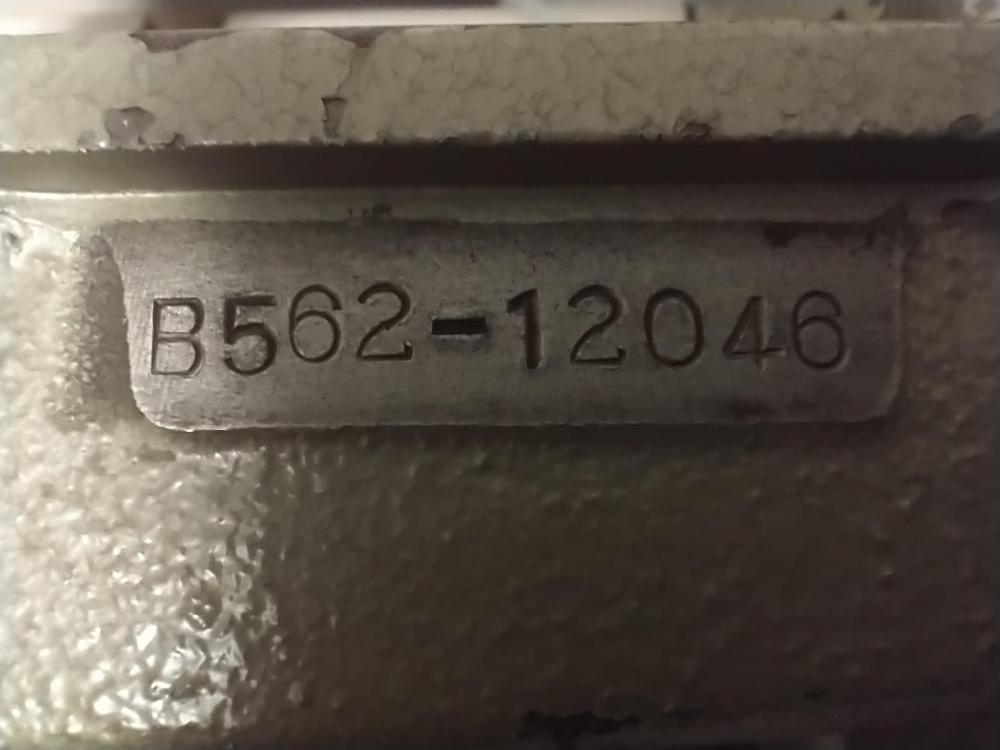-
Posts
391 -
Joined
-
Last visited
Content Type
Profiles
Forums
Events
Blogs
Gallery
Everything posted by SARK9
-

How can i activate foot lifter for 45k25
SARK9 replied to depodarcom's topic in Leather Sewing Machines
The simplest way would be by attaching the chain to a foot pedal, but you would probably have some real estate conflicts putting that on a treadle base. Next would be adapting a knee lift pad similar to the typical ones used on machines like the Consew 206 and several others. There are a few different styles sold as aftermarket kits and you could work out the geometry to suit. A small air cylinder is also an option (I have several on various machines) but they are generally all the way up or all the way down NOW as in "ON/OFF" unless you go full MacGyver on the attachments. The knee lift kits are probably the best bet and can be as cheap or dear as you like. -DC -
On this subject: Does anyone have a dimensioned drawing of the table cutout for a Juki LG-158 (30") ? I need to make a new custom replacement as the one which came with my machine is so degraded and warped that I don't want to use it for measuring. I THINK but don't know with certainty that the Singer 144W30x table measures the same but I don't have one locally to double check the exact hinge mortise locations. Any pointers to a site that might have such things would be appreciated! TIA -DC
- 181 replies
-
- diy sewing table
- industrial sewing table
-
(and 3 more)
Tagged with:
-
Heck. I was looking for ways to shrink it down and forgot its the commonly available PARTS LIST. Sorry!
-
Sorry- I have it as a pdf file that is 2.7 megs....was looking at options share it and got side tracked while looking for workarounds. -DC
-
I think I do, I'll dig thru a couple of drawers tomorrow- DC
-
Yeah, and if you still want to proceed, note that the conversion in the video changed the "G" bobbin to the much larger "U" bobbin rather than the "M" style. In for a penny, in for a pound. -DC
-

Reliable 6000SM servo motor modification
SARK9 replied to Escritar's topic in Leather Sewing Machines
I am currently still using 4 brushless motors that came with an optical speed controller, and I did a slightly altered mod to them all several years ago. None have failed and all are still running perfectly. I found the gradient method a bit too inconsistant as it advanced to control the light source, and substituted a strip of completely opaque black plastic strip cut at a radius which uniformly rotated into the light beam as it moved. Most of the inexpensive brushless motors are using hall effect sensors these days, but I think I still prefer the modified optical myself. I don't have any idea if there even *are* any contemporary brushless servo suppliers still using the optical control shown in that video. -DC -
Check the Seiko SK-2B-1, the one pictured looks like a close copy. I have the SK-6 (bottom feed only) and the SK-6F model is a jump foot like the 132K6. DC
-
I've had/have several "real" Juki LU-563s and an older Chandler badged "CU-563" which as far as I could tell, was identical to the Juki machines. I also have a Chandler badged 562 which is printed "Made in Japan" under the badge, rather than stamped ON the badge, as is seen on my Jukis. The quality of these older chandler marked machines was on par with my genuine Juki products as far as I could tell. The Chandler "562" shows 200R on the badge, and could possibly be a rebadged Consew 226R for all I know, rather than a Juki, except I don't see SEIKO cast on the underside of the bed as I think was done on most of the early Consew contract machines. The Chandler badge might ding the resale a bit, and that was the only downside I saw, as they are fine users, and the 563 actually had the BA0 hook assembly installed, though who knows if it was original to the build. I never felt handicapped in the slightest with any of them. -DC
-
"Soooo 3/8 is a tad too big. I am now left with the idea of tapping the hole with a 3/8 tap. Any thoughts?" The size of the "tap drill" hole is the part to look at. If the 5/16 bolt is too small, but the 3/8 is "a tad too big", check out this size for a possible match. 3/8-24 NF Drill size Ltr.Q (21/64") (.3320) Remember the hole size recommendations are targeted for an average 75% thread engagement and there is a bit of leeway on this fit for practical work that doesn't need to go through 3 levels of inspection and certifications to get paid. -DC
-
If you are familiar with the FB group *Vintage Industrial Long Arm Sewing Machines* there is currently one complete assembly for this family of machines being offered- -DC
-
The LG-158 or LG-158-1 parts all look very similar...I bought several parts for the take-up assembly for mine from SewingPartsOnline-- -DC Juki_LG158_Thrd&WinderComp.pdf
-
One further **off-topic** observation RE: Singer 20U needles: My made-in-Japan "brown" 20U33 WILL accept a couple of brands of HAX1 or 15X1 needles ( with the flats) although it does fit the needlebar hole very closely. They can be oriented to have the scarf face the rear and clamped without issue. My rough measurements of the shanks on the brands I have on hand show that the shank diameters of the "home sewing machine brands" of 15X1 needles average around 0.002" larger than the DPX5/134R/135X5/1955 needles I normally use in the 20U. The needle length and locations of the eye & scarf seem to be nearly identical and my machine sews a wide zigzag stitch using the domestic needles shown. Its possible that those "twin" needles may have an attachment shank diameter that will be within a (-).002 tolerance and fit a stock 20U needle bar, though I have none on hand to try. -DC
-
The "out of stock" part you picture appears to be an adapter that replaces the stock clamp on the end of your existing needle bar. The picture of a double needle "in use" could be one of these of some flavor- https://www.sewingpartsonline.com/denim-jeans-twin-needle-schmetz-1.aspx?gclid=EAIaIQobChMIscmIztOt-gIVvxbUAR3lDgaZEAQYAyABEgIxwfD_BwE It does seem to use the stock 20U clamp, as these would (if they fit properly). -DC
-
The 111w152-155 were all pretty similar....if it matters, you can probably narrow down the model from the max stitch length & foot lift. -DC
-
Have a look at: About 3:12 for a couple of things to check. At the point in the cycle where the presser foot should be holding the material down, try to wiggle it from side to side to check the hold down force. Also test when the presser foot lifts to see if the walking foot is pressing the material to the feed dog firmly, and its moving in unison with the needle & feed dog. You may need to reset the heights & timing as is shown in the video to accommodate non-OEM feet and different materials. -DC
-
With many of the **import** presser feet I've purchased, the installed length of the foot assembly can be wildly variable, and your foot motions may be totally wrong in terms of the presser foot's lift timing and height, as well as the walking foot's actual usable loading of the work against the feed dogs for transport. This is usually a trivial adjustment on the Singer 111w** type machines, but I have no firsthand on the 'Adlers. There are several Adler owners that will know if that adjustment is similar to the Singer/Juki/Consew walking foot mechanisms, and if so, its well documented on member Uwe Grosses' excellent videos. -DC
-
https://navyaviation.tpub.com/14217/css/Chapter-4-Sewing-Machine-Repair-53.htm -DC
-
Looks like a very early Consew 226, or one that has possibly had the handwheel replaced with a Singer model. -DC
-

Hard time finding a bobbin to fit my machine
SARK9 replied to leanne12's topic in Leather Sewing Machines
Here is an odd one for your consideration- I do not have any info on which manufacturer uses this, but at least it has a name. -DC -
The 111w152 is a useful triple feed machine....however, it has a more limited foot lift and stitch length than the similar 111w154 or 155. I used a 152 for quite a while as a dedicated binder machine for mainly one part style, for which the stitch length was about 8 and the matl thickness hardly varied. It's a good machine, but not the best choice for versatility...for the price I'd cross my fingers and keep looking.
-

LU-563 conversion hook aftermarket differences?
SARK9 replied to Wilitrun's topic in Leather Sewing Machines
Also the 563 bobbin case opener... -DC -

Big Barb - The Consew! (255 RB2 - I think!)
SARK9 replied to suzelle's topic in Leather Sewing Machines
Many would suggest that obsolete "clutch motor" is not worth the bother or the time needed for the necessary learning curve.... unless you plan on working in a garment factory doing a quota of by-the-piece work with no say over the equipment provided, or just wish to collect another skillset with ever diminishing real-world value. I recently did a shop clean-out and had a full pallet of clutch motor "take-offs" I had shoved out of the way....all were originally installed on the various used industrial machines I had purchased over the years. I listed them on the usual sales sites like FB MKT and Craigs list, priced at $15 each or a cheaper price for all. Several looked like new. I had ZERO takers for a couple of months time, and finally gave the whole batch to a neighbor's grandson to tinker with for his non-sewing projects. They really seem to have zero market value these da ys. These old industrial motors originally became commonplace with "individuals" as the typical installed component available on the surplus second hand sewing machines sold off and replaced by factories, and in past times there was little else available as a power source for these bargain priced cast-offs. There are now several styles of "servo motors" available which are much more pleasant to use either in a high-production factory OR a small shop/home shop, and their popularity is a result of many factors. Mine are capable of 3500/4000 RPM and will definitely rock if you need to rock, but are much less temperamental and predictable for very slow detailed work. Most all of them DO require the RPM to get up into the "power band" for sewing hard to penetrate or sticky materials, and adding a speed reducer (torque multiplier) is a quick fix that is pretty palatable for most. The anti-backlash "feature" was provided to counteract the rotating inertia of a bobbin spinning nearly as fast as the machine could drive it on repeat patterned parts (as in the above ACTUAL industrial factory or shop), then coming to frequent abrupt stops.... it would unwind a couple of revs and produce a good birdnest frequently. If your style of sewing is often required to do long runs as fast as possible as some upholstery shops encounter, then including the backlash washer will benefit you and its not really going to bother anything. The actual problem is most likely that clutch motor's awful behaviors. The machines with a "vertical axis" bobbin (like the Juki LU563, Singer 111W and similar) tend to be completely intolerant of just starting out stitching without hanging on the the needle thread for a couple of stitches. If you have a top-loading bobbin, figure on hanging on to the thread tails. As others here have mentioned recently, I also use a strong magnet to anchor that thread when I have to have both hands on the work. I think the issue is a design that allows the first stitch to "prefer" pulling the loose thread tail rather than pull the needle thread through the whole tension assembly when it begins. That safety clutch is there for a reason! My Consew 206RB5 (horizontal axis bobbin) actually makes a marketing feature out of its ability to simply change bobbins and start sewing without so much as pulling the bobbin thread up through the feed dog first as was always the usual practice, but I do tend to hold back the needle thread out of habit anyway..... -DC -
It has the smaller "G" bobbin, so that would make it an LU 562, although the Consew 226 also had the G bobbin. The *200R* tag on the machine appears to be a totally Chandler designation, but the "B562" stamped on the frame was most likely done by the actual manufacturer of the machine. Its a dead ringer for my 563 except for the bobbin size. The name "Consew" itself was a legal dodge to enable marketing the machines in the U.S. , as the earlier "Consew" machines were actually made by Seiko in Japan as I recall. Both seemed to owe a lot to the Singer 111G156 design..... -DC
-
I've owned the Chandler version of the LU-563, and recently bought a Chandler rebadged 562. Both were excellent machines and I could tell little difference in quality between them and the Juki versions I own now. The fidelity of the "copy" is so excellent I would be inclined to suspect that some of these machines were MADE for Chandler by Juki under contract. The details on the markings of the "562" clone I have is pretty suggestive- You could do far worse with a more contemporary import clone of this machine, IMHO. -DC




